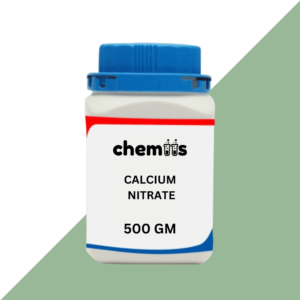Sodium Selenate is an inorganic compound with the chemical formula Na₂SeO₄, known for its role as a source of selenium, an essential trace element. It is a colorless, crystalline solid, soluble in water, and highly valued in agricultural, nutritional, and industrial applications. Sodium Selenate is widely used as a selenium supplement in animal feed, fertilizers, and dietary products. It is also utilized in specialized chemical synthesis and as a reagent in laboratory applications.
Applications:
1. Agriculture
- Fertilizers: Used to enrich soils with selenium to promote plant growth and improve crop selenium content.
- Animal Feed: Serves as a selenium supplement to prevent selenium deficiency in livestock, enhancing animal health and productivity.
2. Nutritional Supplements
- Dietary Products: Included in multivitamin and mineral supplements to support human health, particularly for its antioxidant properties and role in thyroid function.
3. Industrial Applications
- Glass Manufacturing: Acts as a decolorizing agent in glass production, neutralizing green and yellow tints caused by iron impurities.
- Chemical Synthesis: Used as a precursor in the production of selenium-containing compounds.
4. Laboratory and Research Use
- Reagent: Employed in analytical chemistry and biochemical research for its unique chemical properties.
- Trace Element Studies: Used in experiments related to selenium’s biological functions.
5. Environmental Applications
- Water Treatment: Investigated for its role in reducing mercury contamination in water bodies through chemical processes.
Safety Guidelines:
- Personal Protective Equipment (PPE):
- Wear gloves, protective eyewear, and appropriate clothing when handling Sodium Selenate.
- Use a respirator in areas where dust or aerosols may form.
- Storage:
- Store in a cool, dry, and well-ventilated area. Keep the container tightly sealed and away from incompatible materials such as strong acids or reducing agents.
- First Aid:
- Inhalation: Move to fresh air immediately and seek medical attention if respiratory irritation occurs.
- Skin Contact: Wash thoroughly with soap and water; remove contaminated clothing.
- Eye Contact: Rinse eyes with plenty of water for at least 15 minutes and consult a physician.
- Ingestion: Do not induce vomiting; rinse mouth and seek immediate medical attention.
- Disposal:
- Dispose of in accordance with local, regional, and national environmental regulations. Avoid release into waterways as it may be harmful to aquatic life.








Reviews
There are no reviews yet.